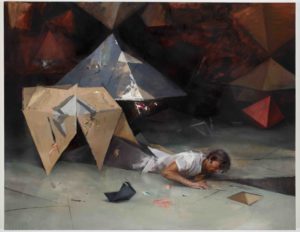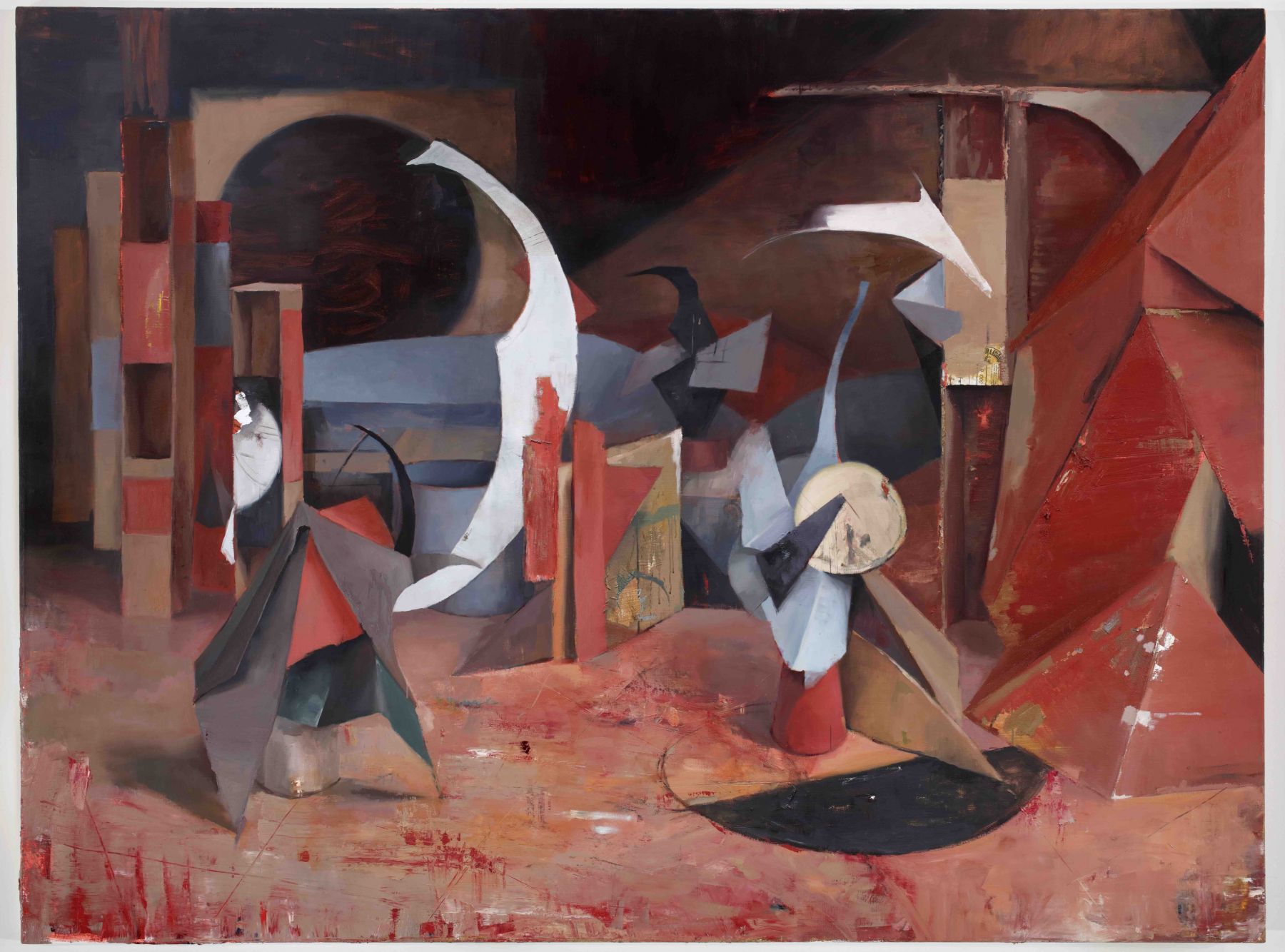Daniel Pitín’s paintings allegorize the uneasy tension between our mortal individuality and the cold cardboard abyss of the computerized world. Most works in his current show depict inchoate figures merging into geometric multi-planar forms. These unclassifiable, cubistic shapes alternate between obtrusively imposing upon the protagonists and intrusively annexing their bodies.

Daniel Pitín, Structural Process (2016), courtesy of the artist and Nicodim Gallery.
Dimly illuminated against ambiguous gloom, the shapes seem to represent incarnations of existential dread. Structural Process (2016) depicts an amorphous construction towering like a storm cloud and assaulting a woman appearing drained by its besetment. In Crystal Field (2016), a nondescript man is dragooned by a regiment of menacing pyramidical forms whose vanguard, a dismantled cardboard box, impales his prostrate body.

Daniel Pitín, Crystal Field (2016), courtesy of the artist and Nicodim Gallery.
These subjects bear appropriately wretched miens; however, others’ demeanors seem unmatched to their predicaments. For instance, the woman performing a plank in Work Out (2016) grins delightedly. Such incongruity seems meant to ironically reflect obliviousness, but it disserves the paintings’ emotive character.

Daniel Pitín, Work Out (2016), courtesy of the artist and Nicodim Gallery.
The pictures are gritty. Collaged paper confers texture and affects age, as does the sometimes seemingly battered paint piled along edges. Limit Shapes (2016) and Sunflower (2016), desolate interior scenes of abstract sculptures, evoke the shivery wonder of exploring an attic full of strange artifacts. These images appear as simplified models illustrating intangible cloisters inside digital realms. Cloud Cartography (2015) is a jumbled video that helps elucidate such aspects of his paintings’ geometric spatiality, as does a sculptural installation that symbolically places the viewer inside his paintings.
Despite his considerable technical skill, Pitín’s mixtures of illustrative looseness, chiaroscuro and Cubism flirt with pastiche; the paintings’ similarities of scenarios, posed figures and dismal palettes seem formulaic. Redeeming the repetitive contrivances are his clever symbolism and urgent message. We constantly dabble with gadgets, digitally pinging away in futile attempts to alleviate ennui and desolation; but doing so long-term only detaches us from our own humanity. Pitín’s protagonists devolve into humanoid contraptions and drown in seas of apprehension that in actuality lap threateningly at our consciousness.
Daniel Pitín, “The Mechanical Flowers,” February 11 – April 1, 2017, at Nicodim Gallery, 571 South Anderson Street, Suite 2, Los Angeles, CA 90033, www.nicodimgallery.com.



















0 Comments